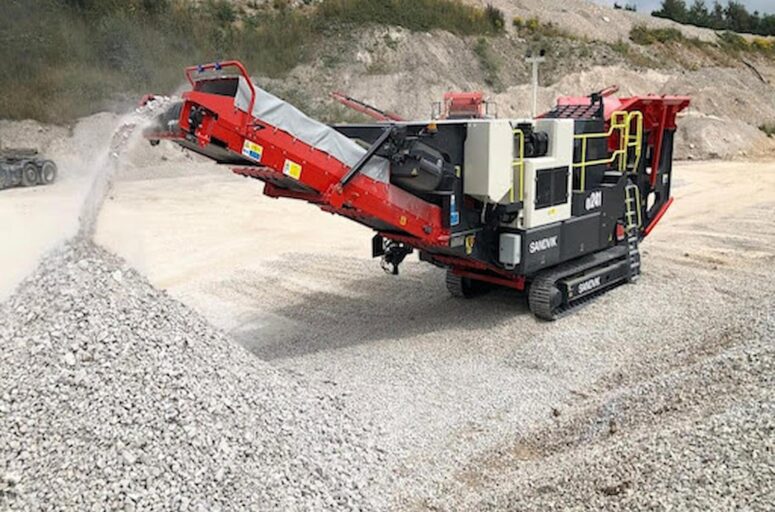Mobile screens have become an essential part of modern mining. These flexible machines simplify on-site material separation, increase mobility, and boost productivity. This article explores how mobile screens improve mining operations with their versatile design, real-time adaptability, and ease of transport. Learn about their practical benefits and real-world applications, and why they are replacing fixed systems in many mining sites.
Mining is constantly evolving. Efficiency, adaptability, and productivity are now more critical than ever. Traditional methods of material screening are slowly giving way to more agile solutions. One such innovation making a significant impact is the mobile screen. These compact and powerful machines are transforming how materials are sorted and separated in global mining sites.
Here, we uncover the benefits mobile screens bring, how they streamline screening processes, and why they’re paving the way for future mining practices. Whether you’re a site manager, equipment operator, or just exploring trends in the mining sector, this guide offers actionable insights into one of the most important tools in today’s mining landscape.
What Are Mobile Screens?
Mobile screens are portable screening units used to separate materials, such as gravel, rocks, or ore, into different sizes. Unlike fixed screening equipment, these units can be moved directly to the mining site, offering great flexibility in rapidly changing environments.
Core features include:
- On-board conveyors and control systems
- Wheeled or tracked chassis for mobility
- Adjustable screen decks for varied material sizes
- Power-efficient engines or electric options
Why Flexibility Matters in Mining
Mines are dynamic environments. As excavation progresses, the location and volume of material change constantly. Fixed screening equipment often struggles to keep up with this pace. Mobile screens offer a solution that moves with the site.
Here’s why flexibility is critical:
- Reduced material handling: Mobile screens can be placed closer to the excavation point.
- Quick setup: Most units can be deployed within hours.
- Adaptability to terrain: Tracked units can handle uneven or rough surfaces.
These benefits translate into cost savings, less downtime, and improved output.
Efficiency Gains with Mobile Screens
Efficiency is at the heart of every mining operation. A delay in material sorting can affect the entire production chain. Mobile screens offer a fast and responsive way to sort materials on the spot.
Advantages include:
- Faster material processing
- On-site adjustment to screening size
- Less reliance on haul trucks and conveyors
- Minimal civil infrastructure
With mobile screens, you gain control over the screening process, resulting in better material yield and higher productivity.
Types of Mobile Screens
Understanding the different types of mobile screens helps you choose the right solution for your mining site.
1. Scalping Screens
- Ideal for removing fines from heavy materials.
- Commonly used at the primary stage of screening.
2. Inclined Screens
- Feature angled decks for better stratification.
- Suitable for finer material separation.
3. Horizontal Screens
- Offer precise screening with more accurate sizing.
- Great for secondary or tertiary screening.
4. Trommel Screens
- Cylindrical drums that rotate to sift materials.
- Often used in recycling and softer material handling.
Each type has its unique use cases, and the selection depends on your operational requirements and the nature of the material.
Use Cases Across the Mining Sector
Mobile screens are used in various mining segments. Below are a few examples of their practical applications:
- Gold Mining: For separating fines and oversized materials quickly on-site.
- Coal Mining: Screening raw coal before transportation.
- Iron Ore Mining: Ensuring accurate sizing before processing.
- Aggregate Production: Creating uniform grades for construction use.
Their portability and efficiency make them especially useful in remote or temporary mining operations.
Key Benefits Over Stationary Screens
While stationary screens have their place in large-scale processing plants, mobile screens offer unique advantages.
| Feature | Mobile Screens | Stationary Screens |
| Setup Time | Quick (hours) | Long (days/weeks) |
| Portability | High | None |
| Operational Cost | Lower | Higher due to infrastructure |
| Maintenance | Easier | Requires shutdown |
| Application Flexibility | High | Fixed location use |
Mobile screens offer superior agility for operations that demand speed and flexibility.
Environmental and Economic Impact
Mining companies are under increasing pressure to reduce their environmental footprint. Mobile screens can help meet this demand.
- Lower fuel consumption compared to transporting materials to distant screens.
- Reduced dust emissions due to on-site processing.
- Less land disruption, as there’s no need for large concrete foundations.
On the financial side, the return on investment (ROI) is quicker due to reduced operational costs and faster deployment.
Smart Technology Integration
Today’s mobile screens have modern features that enhance usability and performance.
- Remote monitoring systems
- Load sensors for automatic adjustment
- Digital maintenance alerts
- Energy-saving modes
These innovative features improve operational control and align with digital transformation goals in the mining industry.
Best Practices for Using Mobile Screens
To get the most out of mobile screens, follow these simple but effective tips:
- Choose the right screen type for your material.
- Conduct regular maintenance to avoid unexpected breakdowns.
- Train your operators on efficient usage and troubleshooting.
- Monitor performance metrics regularly to optimise output.
Consistency in these areas can significantly enhance long-term efficiency.
Challenges and How to Overcome Them
While mobile screens are highly beneficial, they’re not without challenges:
Common issues:
- Wear and tear from abrasive materials
- Limited capacity compared to large stationary units
- Risk of improper material feed
Solutions:
- Use wear-resistant liners
- Supplement with additional units for higher volume
- Implement proper loading practices
Proactive planning and upkeep can eliminate most operational hiccups.
Future Outlook: Growing Role of Mobile Screens
The mining industry is leaning toward decentralised, flexible systems. Mobile screens fit this model perfectly. With growing interest in modular mining solutions and increased demand for resource efficiency, these machines are set to become standard across most operations.
New developments such as hybrid power systems, AI-driven automation, and self-adjusting screens will increase their relevance.
Conclusion
In a fast-paced, high-pressure industry like mining, adaptability is more than a benefit it’s necessary. Mobile screens provide a clear path toward better efficiency, flexibility, and sustainability. Their ability to quickly move, set up, and process materials on-site puts them leagues ahead of traditional systems.
As mining continues to evolve, those who adopt agile screening solutions will lead the way in productivity and cost-efficiency. It’s clear—mobile screens are no longer a luxury; they are a strategic necessity for any modern mining operation.

